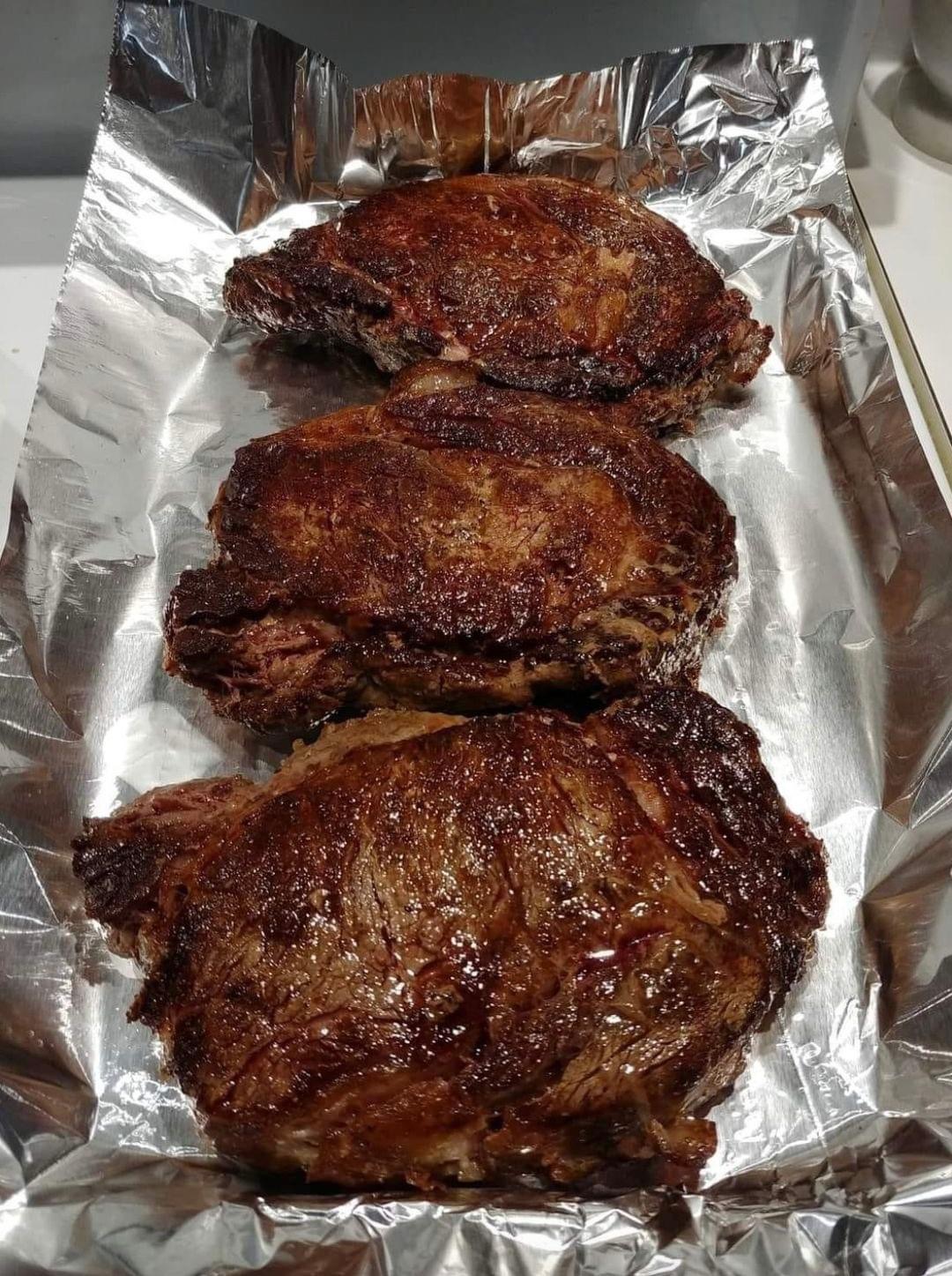Ribeye Steak

Introduction
Ribeye steak is often regarded as the king of steaks due to its rich marbling and full-bodied flavor. This cut, taken from the rib section of the cow, is known for its tenderness and juiciness, making it a favorite among steak lovers. Cooking a ribeye steak to perfection can elevate a simple meal into a luxurious dining experience. Whether you’re a seasoned chef or a home cook, mastering the ribeye steak will impress anyone at the dinner table.
History of Ribeye Steak
The ribeye steak has a storied history rooted in traditional American cuisine, although its popularity extends worldwide. In the United States, it has long been celebrated in steakhouses for its balance of flavor and tenderness. The term “ribeye” comes from the central part of the rib steak, which is boneless and includes the coveted “eye” of fat. This cut is associated with cowboy culture in the American West, where cattle ranching thrived, and beef became a staple of hearty meals. Over time, ribeye became a signature cut in steakhouses across the country and remains one of the most beloved cuts of beef.
Ingredients
- Ribeye Steaks: 2 (about 1.5 inches thick)
- Kosher Salt: 1 tablespoon
- Freshly Ground Black Pepper: 1 tablespoon
- Garlic Powder: 1 teaspoon
- Butter: 4 tablespoons
- Fresh Thyme: 2 sprigs
- Fresh Rosemary: 2 sprigs
- Fresh Garlic: 3 cloves, smashed
- Olive Oil: 2 tablespoons
Instructions
- Preparation:
- Remove the ribeye steaks from the refrigerator and let them come to room temperature for about 30 minutes. This ensures even cooking.
- Preheat your oven to 400°F (200°C).
- Pat the steaks dry with paper towels to remove any excess moisture, which helps to achieve a better sear.
- Seasoning:
- Generously season both sides of the ribeye steaks with kosher salt, black pepper, and garlic powder. Make sure the seasoning is evenly distributed across the surface of the meat.
- Searing the Steaks:
- Heat a cast-iron skillet over medium-high heat and add olive oil.
- Once the skillet is hot and the oil is shimmering, carefully place the steaks in the pan. Sear each side for 2-3 minutes until a golden-brown crust forms. Do not move the steaks around; let them sear undisturbed to develop a flavorful crust.
- Basting:
- Add the butter, smashed garlic cloves, thyme, and rosemary to the skillet.
- Tilt the pan slightly and use a spoon to baste the steaks with the melted butter and herbs. Continue basting for about 1-2 minutes on each side.
- Finishing in the Oven:
- Transfer the skillet to the preheated oven and cook the steaks for 5-7 minutes, depending on your desired doneness (5 minutes for medium-rare, 7 minutes for medium).
- Use a meat thermometer to check the internal temperature: 130°F (54°C) for medium-rare, 140°F (60°C) for medium.
- Resting:
- Remove the skillet from the oven and transfer the steaks to a cutting board. Tent the steaks with aluminum foil and let them rest for 5-10 minutes. Resting allows the juices to redistribute within the meat, ensuring a juicy steak.
- Serving:
- Slice the steaks against the grain and serve with your favorite sides, such as roasted vegetables or mashed potatoes. Drizzle any remaining butter and herbs from the skillet over the steaks for added flavor.
Methods and Techniques
- Searing: Searing the steak locks in the juices and creates a flavorful crust. It’s essential to get your pan hot enough before placing the steak in to achieve the perfect sear.
- Basting: Basting the steak with butter and herbs adds richness and an aromatic flavor profile that enhances the overall taste of the steak.
- Resting: Allowing the steak to rest is crucial to prevent the juices from running out when you slice it. This step ensures every bite is juicy and flavorful.
Health Benefits
Ribeye steak is a rich source of high-quality protein, which is essential for muscle repair and growth. It also provides essential vitamins and minerals such as iron, zinc, and B vitamins, which support overall health. While ribeye is higher in fat compared to other cuts, it contains healthy monounsaturated fats that can be beneficial when consumed in moderation. However, due to its fat content, it’s best enjoyed as part of a balanced diet.
Nutritional Information (Per 6 oz Serving)
- Calories: 360 kcal
- Protein: 30 g
- Fat: 28 g
- Saturated Fat: 12 g
- Monounsaturated Fat: 12 g
- Polyunsaturated Fat: 1 g
- Cholesterol: 90 mg
- Sodium: 75 mg
- Iron: 2.7 mg (15% DV)
- Vitamin B12: 2.4 µg (100% DV)
- Zinc: 5.4 mg (49% DV)
Conclusion
Cooking the perfect ribeye steak is an art that combines the right ingredients, proper techniques, and a bit of patience. The result is a steak that’s crispy on the outside, juicy on the inside, and packed with flavor. Whether you’re making it for a special occasion or just indulging in a delicious meal, a well-cooked ribeye steak is sure to satisfy. Pair it with a robust red wine or a hearty side dish, and you’ve got yourself a meal to remember.
For the Steak Lovers
For those who truly appreciate a good steak, ribeye is the ultimate indulgence. Its rich marbling and succulent texture make it a standout cut that’s perfect for grilling, pan-searing, or even slow roasting. Whether you prefer your steak rare or well-done, the ribeye is versatile enough to deliver a satisfying experience every time. Don’t forget to experiment with different herbs, spices, and sauces to create your signature steak dish!
Final Thoughts
Steak lovers, take your time to master this recipe, and you’ll always have a go-to meal that’s impressive and delicious. Happy cooking!